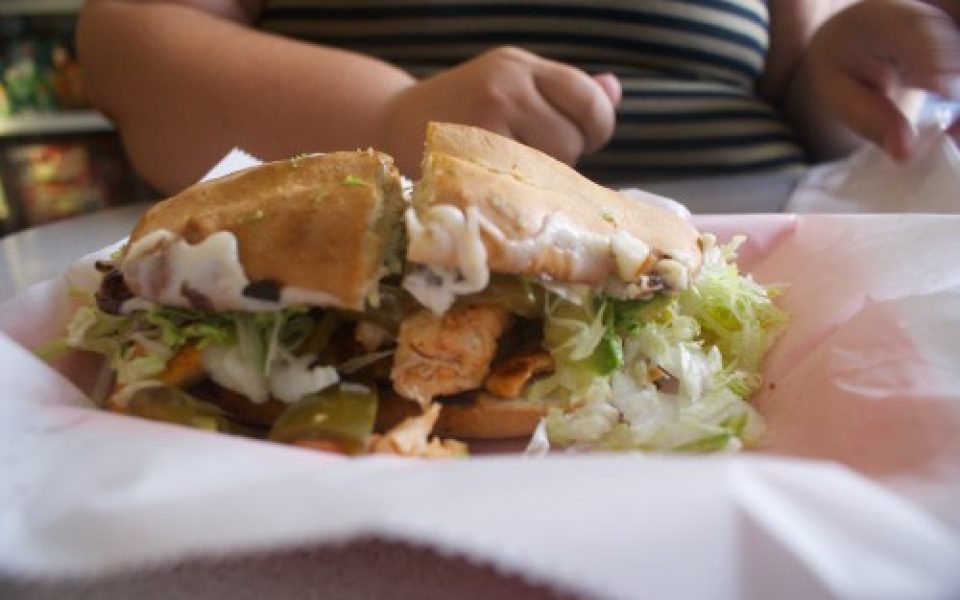Anthony Bourdain never made it to the North Carolina Piedmont Triad as far as I know. Totally understandable: We are not now nor have we ever been a boldfaced name in the culinary world, even at the street level, where Bourdain did his best work. But he would have liked it here, and not just because we offer the type of obscurity on which his show “Parts Unknown” relied. We also have authentic examples of regional and international fare all over the place — enough to craft a Bourdain trail celebrating diversity of palates, food as folk art and the hidden corners — culinary and otherwise — that can be discovered if one is willing to venture off the beaten path.
Bourdain’s journey would begin at Saigon Banh Mi Bakery in Greensboro, the Triad’s most perfect expression of the banh mi sandwich — that improbable concoction of French tradition and Indochine adaptability. Though the baguettes are not made from rice flour in the true Vietnamese tradition, the seasoned meats, pickled vegetables and seaweed desserts pass muster. Bourdain would have liked that the sandwich comes wrapped in plain white paper, with a rubberband around it. And that they ask just $3 for it.
After the snack, Bourdain would need to see the Super G supermarket on West Market Street. The Super G is as close as one can get around here to the open-air markets Bourdain favored on television: live fish, goat heads, durian, nine types of yams and packaged goods from every corner of the world. And there’s a karaoke bar right inside the building.
While in Greensboro, Bourdain also might want to visit Van Loi II on Gate City Boulevard. Billing itself as a Vietnamese restaurant with Chinese barbecue, it’s actually a tribute to pan-Asian carnivore cuisine — think whole roasted ducks hanging from hooks behind glass — with a noodle and sandwich shop attached. Then he might cap it off with a stop at Mercadito No. 1 on Muirs Chapel Road, where he could eat the freshest tacos in town and, if he liked, a sheet of deep-fried pork rind as big as a body pillow.
Bourdain would have wanted to stop in High Point, as interesting in its own way as any of the Third World countries and provincial villages he’s visited. And if he asked around, the locals would lead him to the Biscuit Factory, where for 50 years they have been making biscuits in the true Southern style, fine enough to turn even those who profess not to like biscuits.
To that end, Bourdain would not be able to leave without sampling some North Carolina barbecue. Mr. Barbecue in Winston-Salem fits the bill. One of the few barbecue joints in the Triad cities that cooks with wood, on premises, Mr. Barbecue has been using the same recipes for 50 years. Bourdain loved that sort of thing.
He would also need to try a genuine, Winston-Salem-style hotdog. PB’s, Kermit’s, Pulliam’s… he would have found something to love about each of them.
Bourdain would likely have appreciated the juxtaposition of soul food and fine dining evident at Sweet Potatoes, where it’s possible he might just order every single thing on the menu before insisting upon seeing the kitchen.
A visit to Mary’s Gourmet Diner would be mandatory, if just for the opportunity for him to meet Mary Haglund, but also to see that it is still possible to run a restaurant without compromise. And, of course, to taste the food.
He might end up his gastronomic walkabout at the Library Bar at Spring House Grill. Remember that Bourdain worked in French restaurants before becoming known as a culinary adventurer, so he’d feel more or less at ease in Chef Tim Grandinetti’s flagship joint in the old historic home. And considering how it all ended for Bourdain, it might have been helpful to remind him just how much fun the restaurant business can be.
Join the First Amendment Society, a membership that goes directly to funding TCB‘s newsroom.
We believe that reporting can save the world.
The TCB First Amendment Society recognizes the vital role of a free, unfettered press with a bundling of local experiences designed to build community, and unique engagements with our newsroom that will help you understand, and shape, local journalism’s critical role in uplifting the people in our cities.
All revenue goes directly into the newsroom as reporters’ salaries and freelance commissions.


Leave a Reply